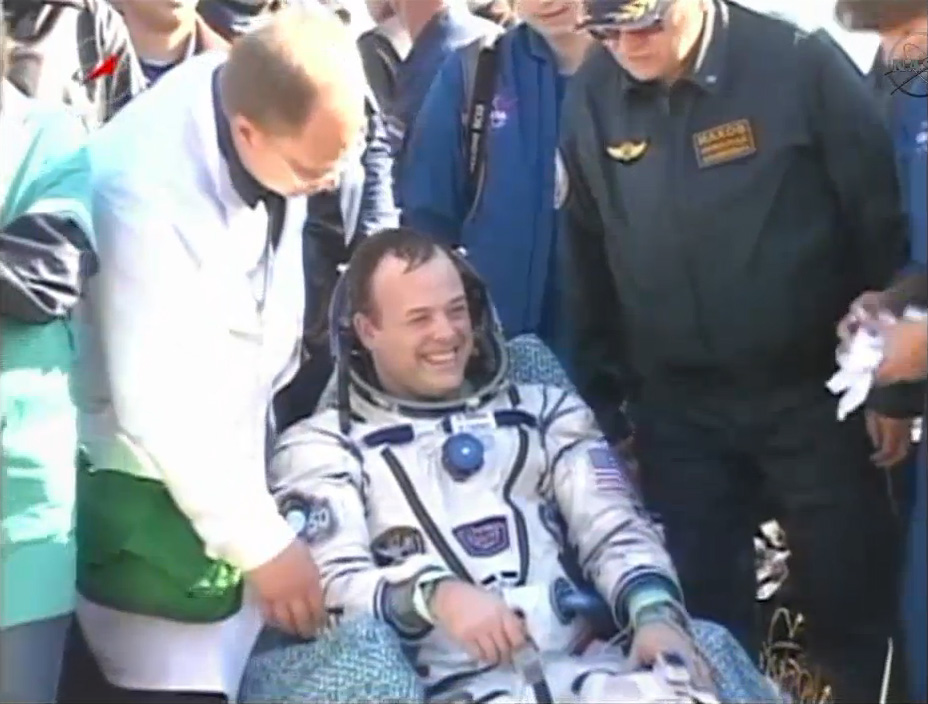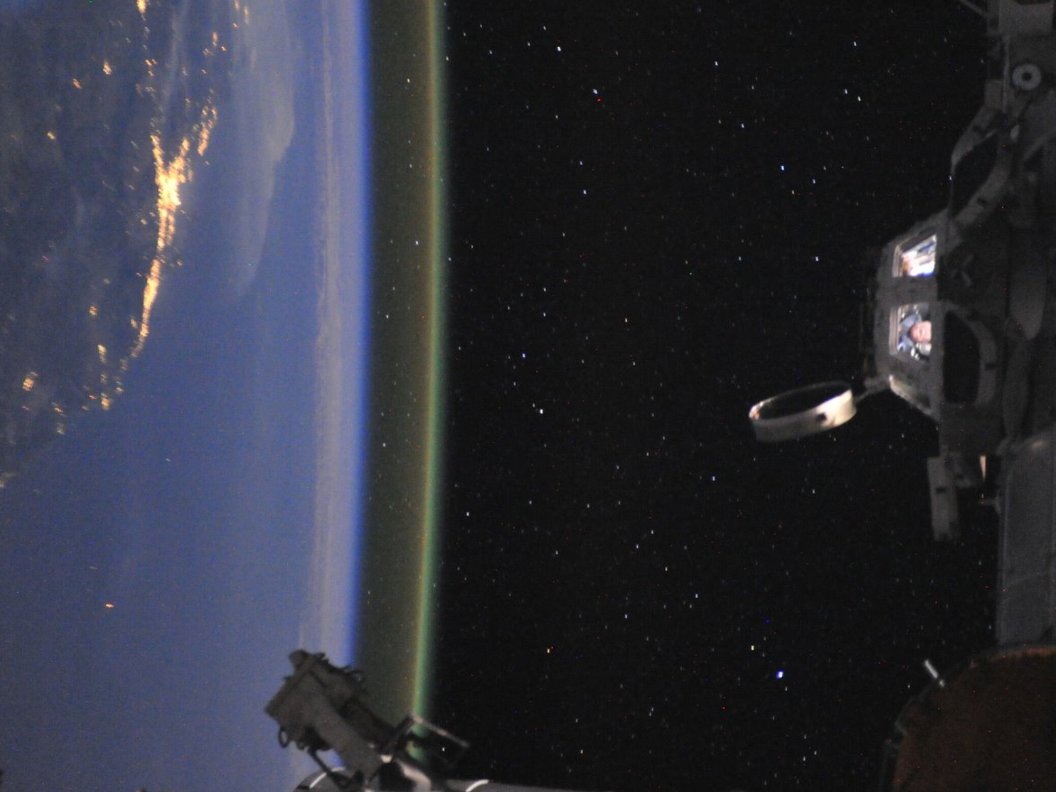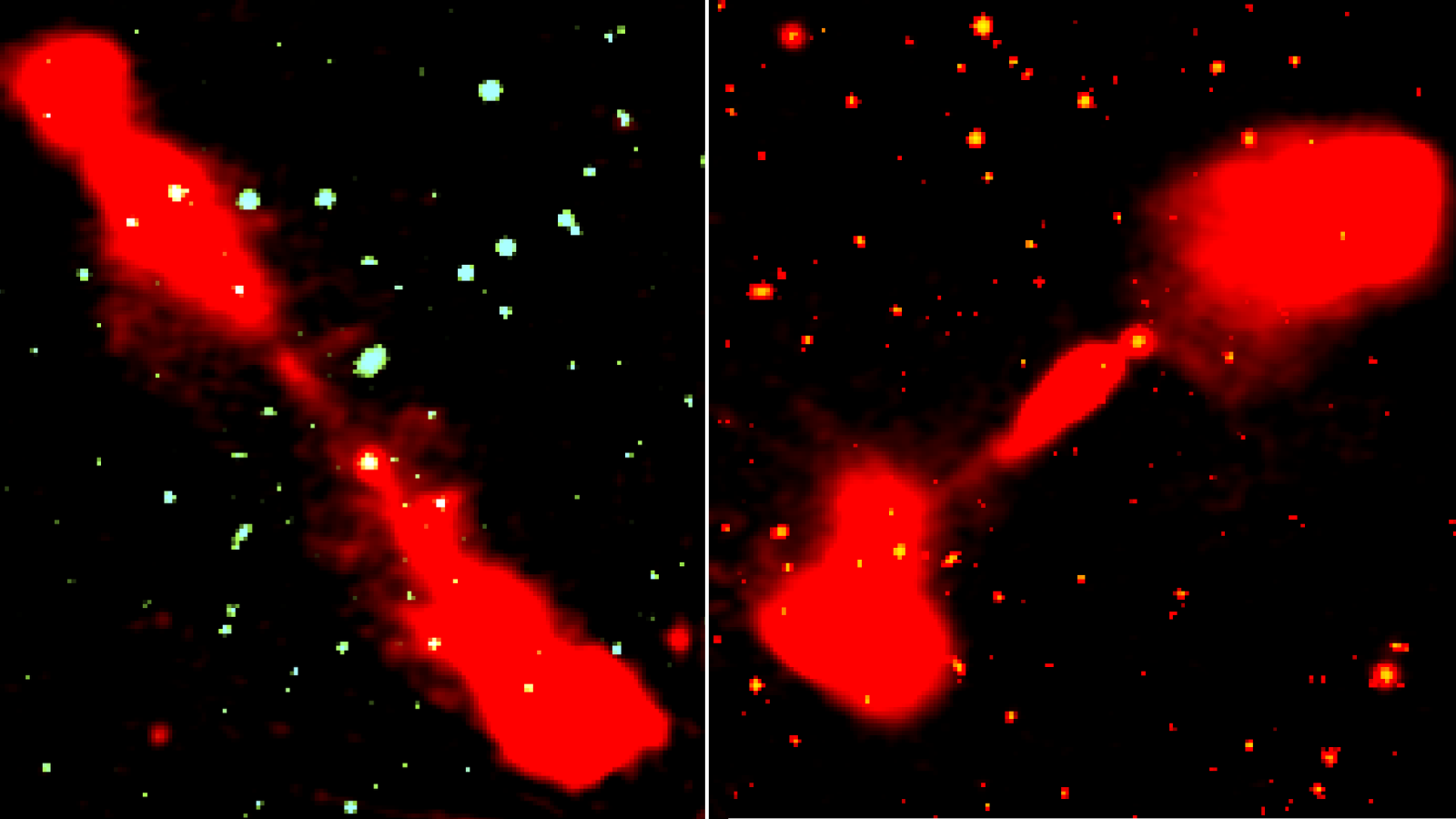Seeing Earth from Space: Q & A With Astronaut Ron Garan

Ron Garan misses the view from space. The NASA astronaut returned Sept. 16 from a five-and-a-half-month stint on the International Space Station.
Now he's getting his Earth legs back and continuing to work on his website, Fragile Oasis, where he shares words and pictures about the view of Earth from space in hopes of inspiring people to take better care of our planet.
Garan recently took time out to talk to SPACE.com about his journey, his website, and possible future spaceflights. [Earth From Space: Amazing Photos by Astronaut Ron Garan]
SPACE.com: How have you been adjusting to being back on the ground?
Garan: It's been good. It's really been wonderful to get back into life on Earth. It's actually gone a lot better than I anticipated. We work really hard on orbit to do a lot of the countermeasures to help us make that transition as smooth as we can when we get back.
SPACE.com: What was the highlight of your trip?
Garan: There's 5 1/2 months of highlights. Obviously the visits of the two space shuttles that came up were really amazing experiences to have. Especially being there and watching history as the last space shuttle departed, the spacewalks that we did, all the science that we did, and being able to share that with five people, and at times more than five people.
Breaking space news, the latest updates on rocket launches, skywatching events and more!
SPACE.com: What was it like to see the space shuttle depart the space station for the very last time? Did the significance of the moment sink in?
Garan: I think it did. We realize that we're watching the end of a chapter in our history and the start of a new chapter, and it was hard not to get emotional when we closed the hatch and said goodbye to our friends as they departed. We knew what that meant. To be right there watching that unfold was a very unique experience. [Photos: Space Shuttle Leaves Space Station for Last Time]
SPACE.com: Tell me about your Fragile Oasis blog, where you wrote updates and posted pictures during your time in space.
Garan: What prompted it was a desire to basically share this view that we have of the planet, to share this experiences as best we can with as many people as we can, and hopefully to use this view that we have to inspire people to make a difference. I think we've got a lot of potential to do just that. Really what we want to do is bring people along on this mission not just as spectators but as crewmates, and have everybody be a part of what we're doing. The ability that we have to send humans in space is an important one and when we do send those people to space they're our representatives.
SPACE.com: Have you gotten a strong response from people reading the site?
Garan: It's been wonderful. We've got all these new technologies, social media. It's making the world a smaller place, it's making the world more interconnected. People are realizing more now that what one person does over here affects somebody over there. I think it’s a very effective way to communicate and share experiences.
SPACE.com: Has the experience of being an astronaut changed in recent years as you've all become more involved in Twitter and other social media?
Garan: Certainly. The tools that we have, the ability that we have to communicate the experience that we're having, to share the experience that we're having, we didn't have those capabilities just a few years ago.
For me personally experiences seem richer, more enjoyable when I can share them with other people. From our point of view as well, it's always good to be able to share those experiecnes with as many people as we can.
SPACE.com: NASA recently announced its design for the new SLS heavy-lift rocket to take people to deep space. Would you be up for a mission to an asteroid or Mars?
Garan: Oh sure. That's why we're here. We're here to explore. I think that's what motivates a lot of people who got into this business in the first place. This desire to see what's beyond the next hill, to explore, to broaden our understanding of the universe. This is a great next step to do just that.
SPACE.com: Do you think we'll send people to Mars in our lifetimes?
Garan: I have faith that we will accomplish whatever we set our minds to. We just have to chose to do it and go for it. Whether that's going to Mars or creating a lunar outpost, whatever we decide is best for the future of humanity.
SPACE.com: What do you think about NASA's new push to support commercial spaceships?
Garan: I think it's a very important step. NASA and the other international space agencies, we are basically chartered to explore, to push the envelope. Turning over low-Earth orbit, if you will, to commercial space companies is a perfect next step.
SPACE.com: Do you think the world would be different if more people had the opportunity to fly in space?
Garan: I really do. I think it's very difficult not to be moved when you look at our planet from space. You see how beautiful it is, how fragile it is. You really get this feeling of, we've been given an incredible gift. We are very, very fortunate. When you see the vastness of space, just utter blackness, and then this absolutely glowing beautiful spacecraft that we're all riding on, a spacecraft we call Earth. I think we would have a lot less problems, some of the challenges we face would be more easily solved, if everybody had that perspective, and we're trying to share that experience as best we can.
SPACE.com: Have you and other astronauts been able to accomplish more research on the station in recent years, now that the facility is completely built?
Garan: This incredible orbiting research facility that basically for the last decade we've been building in orbit, we are now at the point where we can reap the benefits of all that work. In spite of the fact that we've been constructing the space station over the last 10 years, we've still managed to do over 600 experiments. Right now we're breaking record after record of the amount of research we're conducting onboard.
I truly believe in the very near future the entire world is going to realize how critical this facility is when they start to see the amazing breakthroughs, the results of the research, from new medicines, new materials, new tools to create clean energy, the list goes on of all the discoveries I think we're going to see from the International Space Station.
You can follow SPACE.com senior writer Clara Moskowitz on Twitter @ClaraMoskowitz. Follow SPACE.com for the latest in space science and exploration news on Twitter @Spacedotcom and on Facebook.

Clara Moskowitz is a science and space writer who joined the Space.com team in 2008 and served as Assistant Managing Editor from 2011 to 2013. Clara has a bachelor's degree in astronomy and physics from Wesleyan University, and a graduate certificate in science writing from the University of California, Santa Cruz. She covers everything from astronomy to human spaceflight and once aced a NASTAR suborbital spaceflight training program for space missions. Clara is currently Associate Editor of Scientific American. To see her latest project is, follow Clara on Twitter.


